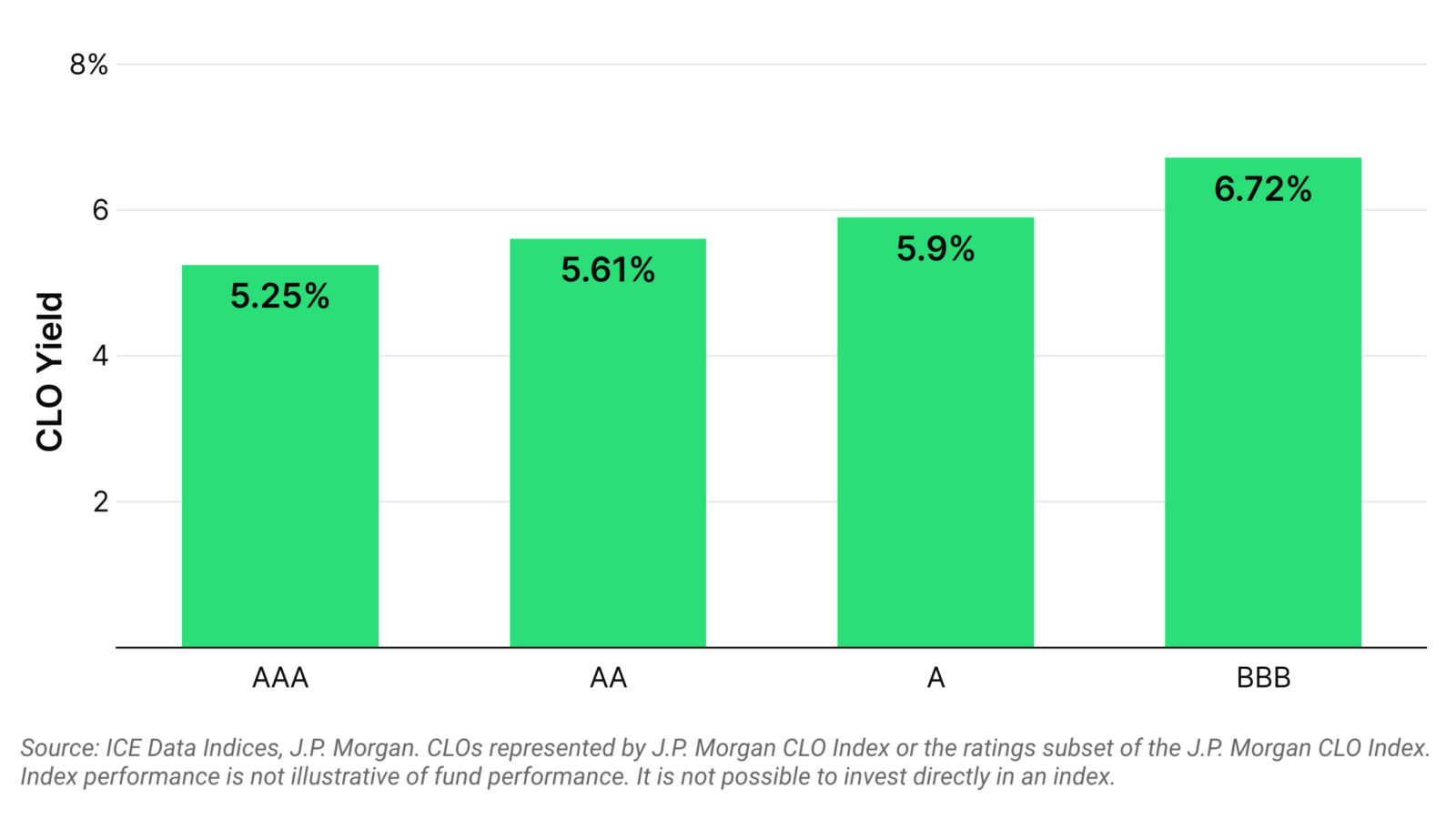Good morning.
Now that is a bump.
The stock market has been on a bull run for a little over two years now, but Wall Street’s top executives may be the biggest beneficiaries of all. CEOs in America’s financial industry saw eye-popping pay increases last year, including JPMorgan’s Jamie Dimon, whose comp package climbed more than 8% to $39 million a year. Bank of America’s chief Brian Moynihan took home a 21% raise from 2023, bringing his pay to $35 million. Citigroup’s Jane Fraser took the cake with her salary jumping 33% to $34.5 million. No surprise, Citi shares are up more than 20% this year, and it has been the top performer of the six big banks.
Even with all the inflation, it’s safe to say those raises were more than just cost-of-living adjustments.
Vanguard Took the ETF Asset Crown. Here’s Why It Matters

State Street’s SPDR S&P 500 ETF Trust began its remarkable three-decades long run as the world’s largest exchange-traded fund back in 1993 when The X Files topped Nielsen ratings and MTV’s The Real World was “all that … and a bag of chips.”
Fast forward to today and there’s a new king. Vanguard’s S&P 500 ETF (VOO) finally cemented itself as the undisputed ETF heavyweight topping $632 billion in assets this week, thanks to a record-shattering $116 billion pulled in last year, according to Bloomberg. Now, the Malvern, Pennsylvania company is eyeing BlackRock’s crown as the world’s largest asset manager, and could potentially close the $157 billion gap this year, said Aniket Ullal, head of ETF Research at CFRA. It’s proof that Vanguard’s commitment to low-cost investing is becoming just as popular as Beanie Babies were in the ‘90s.
“Vanguard continues to dominate mindshare,” Ullal told The Advisor Upside. “VOO’s success isn’t just driven by fees, but also by strong brand awareness.”
A-Van Guard
While SPY charges a bargain-basement price of just 0.095% per year to track the S&P 500, VOO’s fee is just 0.03%. Vanguard even doubled down on cost-cutting this month with the largest fee reductions in its 50-year history:
- Equity ETFs now charge roughly five basis points, while fixed income products clock in at just four basis points.
- Almost nine in 10 Vanguard funds are in the lowest-cost decile of their Morningstar categories.
Still, State Street offers a similar S&P 500 fund SPLG that’s priced at 0.02%, less than VOO. Once fees get that low, other factors like brand awareness and distribution become equally important, Ullal said. It’s a strategy Vanguard is taking into new segments. The company launched two active muni-bond ETFs in November with more potentially on the way.
“This is a major milestone for Vanguard and the ETF industry,” said Todd Rosenbluth, head of research at VettaFi.
I, Spy. Hats off to SPY for an unforgettable run. It’s not only the oldest ETF still in existence, but will remain the default fund for the vast majority of institutional investors with its low bid-ask spreads and high trading volumes. With much longer time horizons, clients are simply favoring lower costs. “Much like Babe Ruth, whose records were broken, SPY will remain in the minds of many as a legend,” Rosenbluth said.
Just like Mulder and Scully.
Identifying Value (and Higher Yields) with CLOs

For many advisors, collateralized loan obligations check many of the key boxes when allocating for clients:
- Attractive cash yields — 5.25% within the AAA tranche, and 6.72% for BBB.
- Diversification — the pooled structure protects against single issuer risk, with default rates baked into expected yields.
- Lower Interest Rate Sensitivity — with rates tied to benchmarks such as SOFR and Euribor, CLOs can be a healthy tactic within a diversified strategy.
Advisors newer to the asset class tend to gravitate to AAA-rated CLO tranches due to their perceived safety, but this approach could be leaving returns on the table.
If History Can Tell Us Anything: Over the past decade, Single A CLOs have outperformed AAA CLOs by 142 basis points per year with lower volatility than investment-grade corporate bonds. BBB CLOs, meanwhile, provide a 147 bps yield pickup over AAAs while offering higher credit quality than high-yield bonds.
Active tranche management is key to navigating these nuances and finding relative value within CLOs.
Joe Duran on Active Management, Insurance and Following Sheep
Joe Duran is betting his new venture can turn middling advisory firms into decabillion-dollar Goliaths.
The former Goldman Sachs executive and United Capital CEO launched the wealth management investment firm Rise Growth Partners last year, and announced a minority investment this week in Grimes & Company, a $5.7 billion fee-only RIA specializing in investment management. Grimes creates actively managed custom portfolios that help ultra-high-net-worth clients diversify highly concentrated portfolios. While most advisors are dumping assets into low-cost, plain-vanilla funds and leaning into planning, active management is an area of the market that is simply being ignored, Duran said.
“It’s the story that everybody tells, and our industry tends to be followed by sheep,” he said. “Planning is actually the commodity, and the investment piece can be differentiated.”
Rise, which also acquired a minority stake in the $10 billion, insurance-based Bleakly Financial in August, is backed by Charlesbank Capital Partners and said it will eventually invest upwards of $250 million in a handful of companies this year. Duran is already in talks with firms that cater to Gen X and Gen Y clients, which he sees as a growing, and lucrative, segment of the market, he told Advisor Upside. “We’re not just people writing a check,” he said.
We chatted with Duran about his latest investment in Grimes, the reason his firm is backing active managers and insurance-based providers, and where he sees the most opportunity for financial advisors.
What’s the biggest competitive threat to the industry right now?
These large national firms that have been built up are basically just modern-day wirehouses. They are just buying and renting advisors. They’re bringing them onto their platform, paying bigger checks, and doing exactly what the wirehouses did for decades. It’s not additive to the end client; it’s not additive to the end advisor.
You’ve seen some of these firms start that way, but now because of all the PE money, it’s just: buy, buy, buy. There’s no migration to put them under the same name, or worry if they deliver the same product. The large RIAs — most of which are just an amalgamation of advisors doing their own thing on a shared platform — look no different than Merrill Lynch or Morgan Stanley. They’re not doing anything in a way that would suggest their brand counts for anything but having big advisors.
The reality is, it’s a great opportunity for everyone else to help create very specific, tailored, and integrated platforms, which most of these large national firms are not.
Active management is having a bit of a Renaissance moment. Why is that?
Active is very out of fashion right now because with most of the large, national firms, you have to model everything and it’s all ETFs. The pendulum is actually swinging in the other direction though, especially for higher-net-worth clients. It’s still planning centric, but you lead with a different investment approach. They want a totally personalized portfolio. And a lot of people today are choosing to ignore that.
How are insurance-based advisors different?
Everybody loves the wirehouse advisor, but nobody loves the insurance-based advisor. I love the insurance advisor because they’re great at relationships. They come from a background where they know how to sell, and they’re really ambitious growers.
Many of them do a very small amount of insurance business and are predominantly RIAs, but they don’t have any natural home in the RIA universe. They’re exceptional advisers, with deep relationships, who grow at double digits a year, and that’s very exciting.
What’s the next big opportunity?
One of the next things that we’re looking at is our Gen X and Gen Y strategy. So, we’re looking at other segments that we think are interesting. Frankly, a lot of people are piling into that exact same marketplace. There are just segments of the industry where there’s big opportunities … where the water is just bluer.
Internet Streamers Need Advice Too. Advisors Are Playing Catch-Up

Smash that “like” button and subscribe.
Like many folks during the pandemic, CPA Ryan Bannister turned to video games for some much-needed human interaction, specifically the live-streaming platform Twitch. What began as a way to talk to others while playing Dark Souls and The Legend of Zelda quickly became “the financial advice hour,” where he informally helped fellow gamers with their finances. In 2022, he launched 1Up Financial Advisors, an RIA that largely targets internet content creators.
“The Mr. Beasts and big streamers of the world are already being taken care of, but I’ve been able to find a sweet spot,” said Bannister, who mostly caters to small- to mid-size creators with six-figure salaries.
Extra Upside
- How Do I Get Out of Here? LPL adds business exit planning to advisory services for high net worth clients.
- No Guts, No Glory. Investors are ready to take on plenty of risk, BofA survey shows.
- CLOs Can Give a Structured Win. With high cash yields, strong credit quality, and minimal defaults (just a 0.3% in investment grade default rate all-time2) advisors should be considering CLOs for client portfolios. Join this webinar from VanEck to learn how a CLO strategy beyond AAA CLOs can provide enhanced income potential without significantly more risk.*
* Partner
ICYMI
- Big Tech Talk. Microsoft says AI will take over wealth management, advisors beg to differ.
- You’re Missing Out. Buffer ETFs leave too much money on the table, Vanguard says.
- Need a Little Help. Only a third of Americans are confident in managing their finances.
Advisor Upside is edited by Sean Allocca. You can find him on LinkedIn.
Advisor Upside is a publication of The Daily Upside. For any questions or comments, feel free to contact us at advisor@thedailyupside.com.
Disclaimer
Investing involves substantial risk and high volatility, including possible loss of principal. Visit vaneck.com to read and consider the prospectus, containing the investment objective, risks, and fees of the fund, carefully before investing. VanEck mutual funds and ETFs are distributed by Van Eck Securities Corporation, Distributor, a wholly owned subsidiary of Van Eck Associates Corporation
1 Source: ICE Data Indices, J.P. Morgan. CLOs represented by J.P. Morgan CLO Index or the ratings subset of the J.P. Morgan CLO Index.
2 Source: S&P Global, “CLO Spotlight: Thirty Years Strong: U.S. CLO Tranche Defaults From 1994 Through First-Quarter 2024.”

